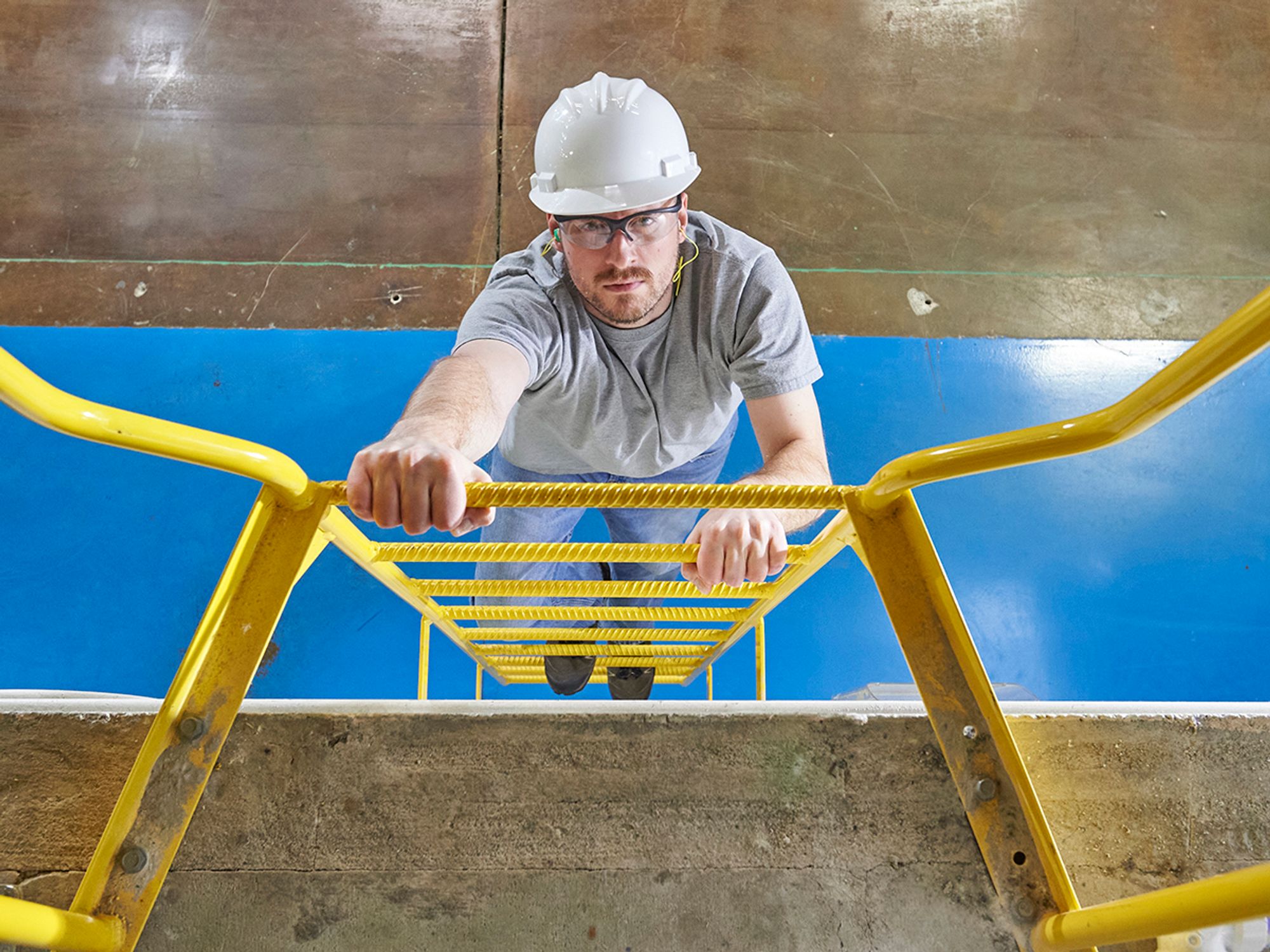Fixed ladders

- OSHA sets standards for fixed ladders that are in addition to the requirements for all ladders.
The fixed ladder requirements are in addition to the requirements for all ladders. The Occupational Safety and Health Administration (OSHA) also uses performance-based requirements for fixed ladders.
OSHA has several requirements for fixed ladders, including:
- Fixed ladders must be capable of supporting the maximum intended load.
- Employers must ensure there is a minimum of 7 inches (18 cm) perpendicular distance from the centerline of the steps and rungs or grab bars, or both to the nearest permanent object in the back of the ladder. OSHA makes one exception — elevator pit ladders only require a minimum perpendicular distance of 4.5 inches (11 cm).
OSHA focused on the requirements for fixed ladder extension areas. The goal is to allow workers to safely transfer from the fixed ladder to the landing surface. Several requirements include:
- Fixed ladder grab bars do not extend, on the climbing side, beyond the rungs; they must also extend at least 42 inches (1.1 m) above the access level and be at least the size (cross-section) as the ladder rungs.
- The side rails extend at least 42 inches (1.1 m) above the top access level or landing platform. If the access level is a roof, the 42 inches is measured from the top of the parapet or if the parapet has a pass through, the 42 inches is measured from the roof.
- If the fixed ladder is a “through ladder,” the rungs are omitted for the last 42 inches. The extensions must also flare out at a minimum of 24 inches (61 cm) and a maximum of 30 inches (76 cm). If a ladder safety system is used, the maximum clearance between the rails of the extension cannot exceed 36 inches (91 cm).
- For side-step ladders, the side rails, rungs, and steps must be continuous in the extension.
OSHA requires the following when a fixed ladder ends at a hatch cover:
- The hatch cover must open with sufficient clearance to easily get on and off the ladder, and
- That counterbalance hatch covers must open at least 70 degrees.
Note: In a letter of interpretation (LOI) from July 27, 2000, OSHA addressed a question of whether fixed ladders that terminate at a hatch must have grab bars extending above, since they may interfere with closing the hatch. OSHA noted that the American National Standards Institute (ANSI) standard A14.3-1992, Safety Requirements for Fixed Ladders, section 5.2.3.1, Extensions for Individual Rung Ladders, stipulates that the general requirement for extension of the ladder above the access/egress level does not apply to ladders “intended for manholes and terminations with hatches.” However, OSHA also noted that guardrails around the opening may be necessary. If the hinged cover is left up while workers are on the roof, the hole would need to be guarded.
Additional fixed ladder requirements include:
- Individual rung ladders must be designed so the employee’s feet cannot slip off the rungs.
- The pitch of the fixed ladder cannot be greater than 90 degrees.
- The step-across distance for:
- A through ladder is not less than 7 inches (18 cm) and not more than 12 inches (30 cm), and
- A side-step ladder is not less than 15 inches (38 cm) and not more than 20 inches (51 cm).
OSHA requires that fixed ladders without cages or wells have a clear width of at least 15 inches (38 cm) on each side of the ladder centerline to the nearest object (e.g., a wall) and a minimum perpendicular distance of 30 inches (76 cm) from the centerline of the steps or rungs to the nearest object on the climbing side.
